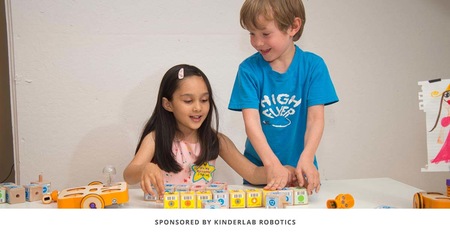While many youth-serving organizations have long included STEM learning aspects as part of their programming, it has now become an accepted and important form of enrichment offered by the afterschool field writ large.
There have been two key reasons for the explosive growth of STEM programming in afterschool.
One: The significant investment by several funders in this space allows for development of crucial support systems for program providers. These supports have helped to build capacity in the afterschool field to offer STEM programming and initiate partnerships with STEM-rich organizations, leading to increased afterschool STEM programming.
The other: Afterschool providers recognized the natural alignment between youth development principles, the hands-on learner-driven approach to STEM, and the need to develop critical STEM skills in the youth they serve. Thus, they embrace offering STEM in afterschool programs, and the America After 3PM study tells us a majority of parents with children in afterschool programs report their children receive some form of STEM learning and also express strong support for it.
Concurrently, there has been significant work on research in afterschool learning and in documenting and assessing the impact of these programs. Results indicate high-quality afterschool STEM programs are inspiring young people and building tangible skills.
Work done by afterschool professionals, advocates and funders has paid off as the larger STEM education community has accepted and embraced afterschool programs as critical partners in the effort to improve STEM education. It has been extremely beneficial to have groups such as the STEM Education Coalition and the National Science Teachers Association as allies to advocate for the importance of afterschool programs as partners in STEM education improvement. STEM education policies are beginning to reflect this acceptance as afterschool becomes an allowable use for STEM education funds and vice versa. The growing STEM Learning Ecosystem movement could benefit afterschool as it attempts to influence cross-sector learning and put the focus on the learner rather than the organization.
As the afterschool STEM field grows and matures, there is more work to be done to increase and improve our offerings. The emphasis on documenting and demonstrating evidence of outcomes is unlikely to decrease. As we work to support providers to offer high-quality STEM programming and improve our ability to assess and report outcomes, we must remain vigilant to protect the nature of this space that allows for innovative programming that engages a diverse group of youth in STEM.
Predictions for STEM and Afterschool
- STEM programming will become a core part of afterschool offerings. Research literature and data on outcomes will become stronger and help nail the case for the importance of afterschool STEM learning.
- The intersection between STEM, social-emotional learning (SEL) and career technical education (CTE) will grow.
- Other countries will see the United States model for afterschool STEM programming as something to adapt, if not duplicate.
By Anita Krishnamurthi, Special Advisor, Public Engagement team, University of Cambridge, and NAA Board Member. This article was originally published in the Winter 2018 issue of AfterSchool Today, the official publication of NAA.




